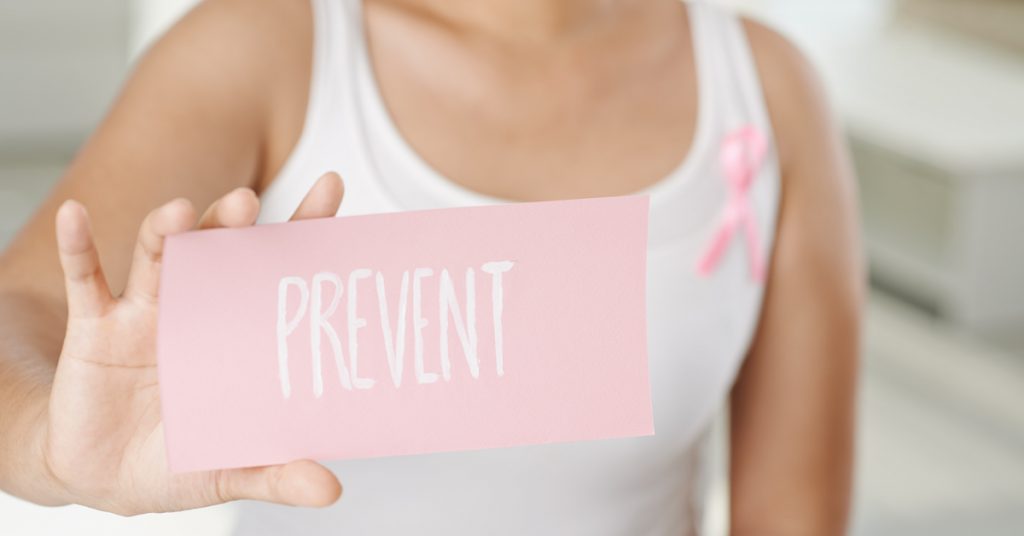
Except for skin cancer, breast cancer is the most common cancer diagnosis among American women. October is breast cancer awareness month, so we wanted to take a moment to remind our patients of how to spot the early symptoms of breast cancer and how to be screened for it.
What Every Woman Should Know About Breast Cancer.
According to the American Cancer Society, nearly 270,000 cases of invasive breast cancer and 63,000 cases of noninvasive breast cancer are diagnosed each year in the United States. Approximately 42,000 women will die from breast cancer every year, which makes it the second leading cause of cancer deaths among women, behind lung cancer. The good news is that increased awareness, screening, and improved treatment options have resulted in a 40% decrease in breast cancer deaths between 1989 and 2016. There are currently 3.1 million breast cancer survivors in the United States. Of course, early detection and treatment still provide the best chance for long-term recovery.
- Certain factors are associated with an increased risk of developing breast cancer; however, many individuals diagnosed with breast cancer do not have any known risk factors.
- Although it is possible for men to develop breast cancer, it is far more common among women. The risk among women increases with age.
- Individuals with a personal or family history of breast conditions or breast cancer are at higher risk for developing breast cancer themselves. Genetic mutations referred to as BRCA1 and BRCA2 significantly increase a person’s breast cancer risk.
- Early puberty, delayed menopause, never being pregnant, and postmenopausal hormone therapy are all associated with an increased risk for breast cancer.
- Although somewhat rare, radiation exposure, obesity, and excessive alcohol consumption can increase a woman’s risk of developing breast cancer.
What Are the Early Symptoms of Breast Cancer?
Breast cancer occurs when the cells inside the breast tissue multiply uncontrollably to form a tumor. Most breast cancers originate in the milk ducts or the lobules that supply them. Most women are diagnosed with breast cancer after they notice a fixed or movable lump in breast tissue during a self-exam or mammogram. Other early symptoms of breast cancer include:
- Pain in the breasts or armpits that is unrelated to your monthly cycle
- Discharge from the nipple
- A change in the size or shape of the breast
- A sunken or inverted nipple
Common breast cancer skin changes include:
- A rash around one or both nipples
- Peeling, scaling, or flaking of the skin of the breast or nipple
- Pitting of the skin that resembles an orange peel
How Do I Know If a Lump in My Breast Is Cancerous?
The majority of breast lumps are benign. In general, a movable lump in breast tissue is more likely to be benign than a hard, fixed lump; however, the only way to know for sure is to have further tests, such as imaging tests or a biopsy.
What Should I Do If I Notice the First Signs of Breast Cancer?
If you notice new lumps, breast skin changes, or other changes in the feel or appearance of your breasts, you should contact your medical provider immediately. Your provider can order a variety of tests to confirm the diagnosis and recommend the appropriate treatment or provide a referral when necessary.
What Are My Treatment Options If I’m Diagnosed With Breast Cancer?
If you are diagnosed with breast cancer, an oncologist, or cancer specialist, will help you choose the best treatment option based on the type and stage of your cancer, the sensitivity of your cancer to hormones, your age and overall health, and your preferences. The most common treatment options include:
- Surgery to remove the tumor and any affected lymph nodes
- Chemotherapy and/or radiation therapy to kill the cancer cells
- Targeted drugs that destroy specific types of cancer tissue
- Hormone-blocking therapies for cancers that are sensitive to hormones
How Can I Prevent Breast Cancer?
You can reduce your risk and improve your odds of recovery and survival if diagnosed by taking the following steps:
- Discuss the risks and benefits of regular breast cancer screenings and self-exams with your healthcare provider
- Limit your consumption of alcohol
- Maintain a healthy lifestyle that includes plenty of exercise and a healthful diet
If you have a breast health concern, visit your nearest FastMed location. Our providers can diagnose and treat common breast-related issues, such as infections. If your issue appears to be more serious, your provider can refer you for the appropriate diagnostic tests and treatment.